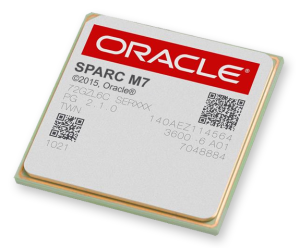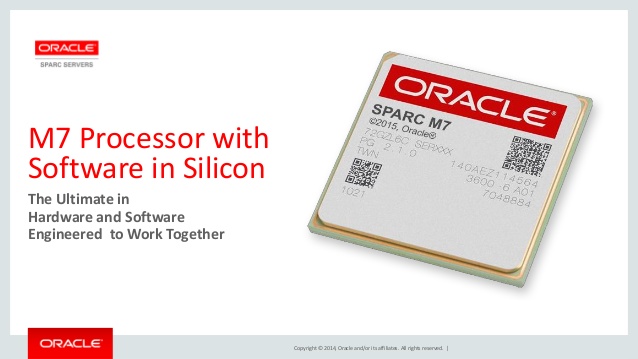–Brian Pereira
Ever wonder what it takes to prevent an e-commerce server from crashing during a “billion-day” sale? That’s because the company’s backend IT infrastructure has been prepared in advance to support scaling. We live in a business world where it is a norm to expect a 10x boost in performance, overnight. And that’s why CIOs are under a lot of pressure to ensure that the IT infrastructure can scale out, yet within the same foot print in the data centre. Also, this scale should offer a significant price-performance boost. The other big concern is security. A business that has its servers connected to the Internet is constantly attacked by malware and hackers. Experts say that one way to block these attacks is to deploy security at the hardware layer itself. It’s called embedded security.
 “The growth spikes are completely unpredictable now. In the past 2x or 3x performance growth was common. But today 10x is just scratching the surface. And if you scale out in the traditional way, your infrastructure would never be able to keep up. You need to have infrastructure that will give you least amount of disruption with multi-X performance gains and scalability,” said Amit Malhotra, Head of Systems LOB, Oracle India.
“The growth spikes are completely unpredictable now. In the past 2x or 3x performance growth was common. But today 10x is just scratching the surface. And if you scale out in the traditional way, your infrastructure would never be able to keep up. You need to have infrastructure that will give you least amount of disruption with multi-X performance gains and scalability,” said Amit Malhotra, Head of Systems LOB, Oracle India.
Take the banking and finance industry for instance. Online payments have suddenly increased manifold, with the availability of mobile wallet apps and new online services. With the Pradhan Mantri Jan-Dhan Yojna scheme, millions of new bank accounts were opened in the last year.
We are witnessing similar spikes in the telecom and services industries too. In the former, millions of new subscribers are enlisted every month. Consumers are also taking to apps and online to subscribe to certain services that are highly convenient – rail and airline reservations, for instance. And that’s why scale has become a byword in business.
“In utilities, the mode of payment is changing. Online payments have suddenly scaled up from one percent to 10 percent,” informed Malhotra.
In the past, businesses would deploy additional servers or nodes in a cluster configuration to handle these spikes. This is known as horizontal scaling or ‘scale out’. The other approach was vertical scaling or ‘scale up’, wherein, within the same box, memory capacity or processing power would be increased by upgrading components. But these approaches to scaling would be very costly today, and are no longer viable.
“In the banking and finance industry, we’ve seen our customers achieve 10x or greater performance improvements. We have also been able to deliver the scale out performance in the same footprint to telecom customers. On some workloads we’ve seen as much as 40x improvement,” said Malhotra.
Oracle believes its latest server processor the Sparc M7, addresses both the scale-out issue as well as security. This chip was launched at Oracle OpenWorld 2015.
SILICON SECURED MEMORY
In his keynote at this event Oracle Executive Chairman Larry Ellison touted the M7’s new defence mechanism: Silicon Secured Memory (SSM).
This Software in Silicon functionality ensures that an application is able to access only its own memory region, which lets software programmers identify issues related to memory allocation. Designed to help prevent security bugs such as Heartbleed from putting systems at risk, it enables hardware monitoring of memory requests by software processes in real time. And it stops unauthorized access to memory whether that access is due to a programming error or a malicious attempt to exploit buffer overruns. It also helps accelerate code development and helps ensure software quality, reliability, and security.
The M7 chip incorporates encryption and data integrity checks at the processor level. There is a lock and key system in the processor for the application that is trying to access memory. The ‘lock’ is in the processor and the application gets a dynamic ‘key’.
So the application must have the right ‘key’ to be allotted some space in memory. And these are colour coded keys. A rogue application will not have the ‘key’ which is only with the application. Hence, the rogue application will not be allotted memory. So the threat is contained at the chip or hardware level. And this is about the simplest explanation for SSM. At the technical level, it is all about registers, pointers and version numbers.
Ellison believes SSM is hack proof and it would have stopped the OpenSSL Heartbleed and QEMU Venom buffer-overrun attacks.
Oracle SPARC M7 servers support the industry standard TPM (Trusted Platform Module) security. On Oracle SPARC M7 series servers, TPM chips reside on the service processors (SPs). One SP acts as the active SP, and the other SP acts as the standby SP. Oracle Solaris OS uses TPM to securely store encryption keys.
BEEFY PROCESSOR
 The M7 chip has 32 cores and supports multithreading. It employs some clever processing techniques to set new industry standards for performance, scalability and price/performance. The M7 also beat the single-chip and two-chip server world records.
The M7 chip has 32 cores and supports multithreading. It employs some clever processing techniques to set new industry standards for performance, scalability and price/performance. The M7 also beat the single-chip and two-chip server world records.
To put it in technical terms, Oracle’s SPARC T7-1 server delivered a new single-chip server world record result of 120,603 SPECjbb2015-MultiJVM max-jOPS and 60,280 SPECjbb2015-MultiJVM critical-jOPS on the SPECjbb2015 benchmark, Multi-JVM metric.
According to Oracle the M7 offers both database and application security and acceleration. These servers offer silicon secured memory, in-memory query acceleration, data compression and decompression, and encryption at their core. The SPARC M7 processor also improves density by doubling the core count of previous-generation processors to support 32 cores per processor, with an architecture that supports up to 256 threads in as little as 2U of rack space.
The SPARC M7 processor also sports improved per-thread performance, reliability, availability, and serviceability (RAS) capabilities, power-efficiency, and double the memory and I/O bandwidths of previous SPARC processors. A new cache and memory hierarchy, along with other improvements, helps to provide up to triple the processing speed of earlier systems.
—————————————————————————————————-










